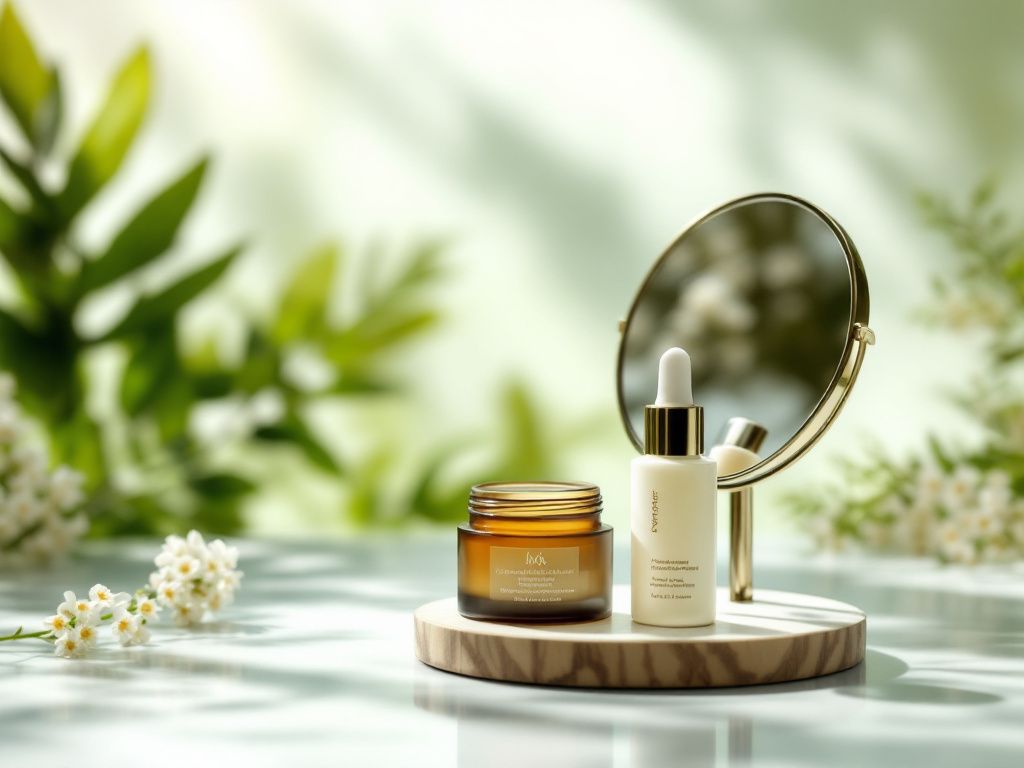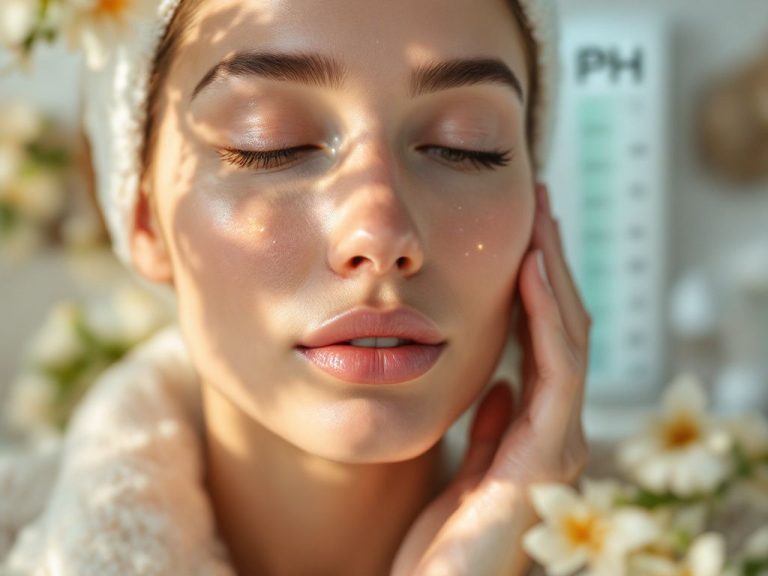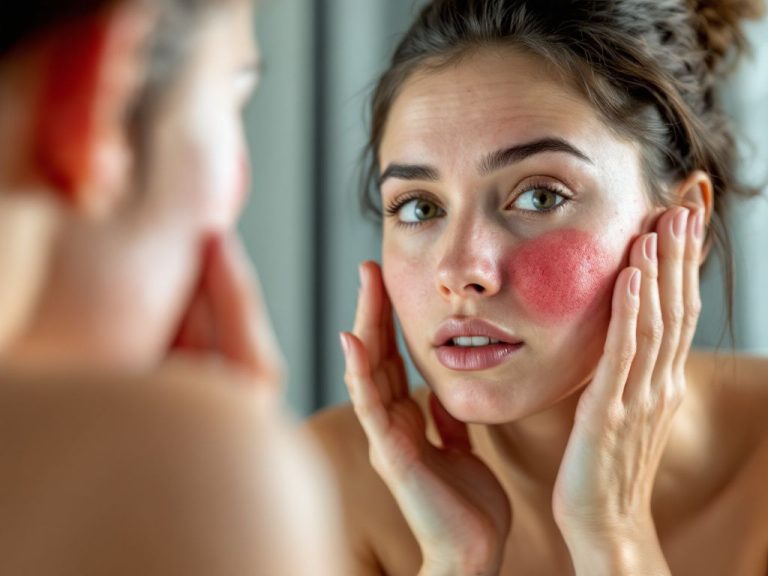It’s an all-too-familiar scenario: you wake up, head to the bathroom, look in the mirror, and boom—right there on your chin is a glaring, red reminder that acne’s still tagging along for the journey. What gives? You thought breakouts would stay a teenage problem, right? Well, turns out, a grown-up life doesn’t always mean a complexion to match. Welcome to the world of adult acne, where your skin seems to be stuck in rebellious adolescence while the rest of you tries to adult.
Table of Contents
ToggleUnderstanding Adult Acne: The Basics
Acne breaking out during adulthood isn’t exactly uncommon. In fact, it can be quite a persistent companion for many. Unlike the acne of youth, which often fades once the hormone hurricanes of teenage years settle down, adult acne sometimes decides to set up camp permanently or make reappearances out of the blue. This isn’t just about looks—it’s managing mature skin in a whole new way. Trust me, we’re diving deep here.
Why Does Adult Acne Occur?
Before we get into how to tackle it, let’s understand why this friendly foe likes hanging around. Adult acne happens for many reasons, often different from those teenage flare-ups.
- Hormones Still Hold the Wheel: Even in adulthood, your body’s balancing act with hormones can lead to skin eruptions. Situations like monthly cycles, pregnancy, or even stress-induced cortisol can lead to breakouts. Think of hormones as those unexpected guests – you never really know when they’ll pop in.
- Stress, The Uninvited Guest: Living the adult life can be an endless circus of stress – work, relationships, health. Stress raises cortisol levels, which can prompt oil production in the skin. Hello, acne!
- Skincare: Can We Be Honest? Believe it or not, your skincare routine might be fueling the problem. From overly-rich creams to products laced with harsh chemicals, it’s easy to use the wrong stuff.
- Lifestyle Plays a Part: Diet, sleep, and exercise habits also affect how often your skin might erupt. Skimping on the basics? Your skin keeps score.
- 5. **Genetics Rule the Roost: Sometimes, it’s all about family nature, and your skin may simply be wired to break out due to your genetic blueprint.
Looking After Mature Skin: Your Daily Routine

Now, if you’re dealing with adult acne, managing mature skin might seem tedious. But developing the right skincare routine doesn’t have to be a daunting task—it’s about creating effective habits over time. Let’s walk through a simple everyday setup:
Morning Rituals
- Gentle Cleansing: Start your day with a gentle, non-comedogenic cleanser to remove night-time oils. No need to scrub your face raw—be kind to your skin.
- Targeted Treatments: Consider using a product with either salicylic acid or benzoyl peroxide, but not both concurrently, as these are top contenders in fighting acne by deep-clean penetrating pores.
- Moisturize Wisely: Stick with a light, oil-free moisturizer. Hydrated skin is healthy skin—don’t shy away from moisture even if you’re battling acne.
- Never Skip SPF: Sun protection isn’t just about preventing wrinkles—it’s about not exacerbating acne scars or marks. Sunscreen is a must, folks!
Evening Unwind
- Lift the Dirt: After a long day, it feels right to wipe off all relief by effectively cleansing. Use a gentle makeup remover before cleansing to ensure everything is addressed.
- Retinol in Moderation: Retinol can be a friend if used carefully. It increases cell turnover and keeps acne at bay. Just watch how your skin reacts; it might need some time to adjust.
- Nourish and Repair: This is where a hydrating serum or an acne-friendly night moisturizer comes into play—these soothe any redness and work their magic as you catch those Z’s.
Adult Treatment Strategies that Work
Trying new routines and products is great, but sometimes adult acne needs more targeted treatments. Here are some approaches that have shown noteworthy results in the adult treatment game:
- Daily Retinoids: Time-honored and powerful, retinoids manage cell turnover and balance oil production. Prescription-strength might suit if OTC options yammer away in futility.
- Say Yes to Vitamins C and E: These antioxidants help repair damaged skin and reduce post-acne marks. Incorporating such vitamins can mean less lingering reminders of breakouts.
- Professional Chemical Peels: These aren’t as scary as they sound! In-clinic treatments help exfoliate dead skin cells and keep pore-clogging to a minimum.
- Balance the Hormones: Speak with health professionals regarding hormonal balancing treatments. Birth control or other hormone-focused therapies may serve where over-the-counter solutions fail.
- 5. **Laser and Light Therapies: A little futuristic, but incredibly promising for adult acne, these remove bacteria and smooth textured skin.
Crafting Your Perfect Skincare Arsenal

Finding products that respect your skin’s quirks can make all the difference. Here’s what your acne-fighting superhero kit should include:
| **Product Type** | **Purpose** | **Key Ingredients** |
|---|---|---|
| Cleanser | Clear out excess oil without stripping | Salicylic Acid, Glycolic Acid |
| Exfoliator | Slough off dead cells and propagate renewal | AHA, BHA |
| Treatment Gel | Target stubborn spots or breakouts | Benzoyl Peroxide, Sulfur |
| Moisturizer | Keep skin hydrated without clogging pores | Hyaluronic Acid, Glycerin |
| SPF | Shield skin from UV damage and lessen blemishes | Broad-spectrum Mineral SPF (Zinc Oxide or Titanium Dioxide) |
The Nutritional Angle: Feed Your Skin Right
If you’ve ever heard “You are what you eat,” you already know diet is part of this puzzle. Here’s how to make conscious food choices work for you:
The Oily Culprits
- Sugars and Carbs: High glycemic foods can spike insulin and increase sebum production; think twice about indulging too much in pastries and sugary treats.
- Dairy Products: Some studies suggest dairy could be a trigger for acne. Though the evidence isn’t definitive, for some it might help to moderate dairy intake.
Skin-Boosting Goodies

- Healthy Fats: Foods rich in Omega 3—like avocados, nuts, oily fish—are superhero goodies for your skin.
- Antioxidant-Rich Produce: Red pepper, spinach, berries—these can combat the oxidative stress in skin cells.
You see, it’s not just about cutting out the bad guys; it’s about spreading more goodness throughout your meals!
Common Missteps: Pitfalls to Dodge
- Over-Cleansing: You might think scrubbing away the oil will help, but you actually risk drying out skin and prompting even more oil production.
- Skipping Moisturizer: The notion that oils are the enemy can tempt some to skip this. Hydrated skin is your ally—it’s all about finding non-comedogenic options.
- Trying Everything All at Once: In the quest for quick fixes, patience is first out the window. Incorporate one change at a time; let your skin breathe before jumping to the next new thing.
- Sun Avoidance: Although direct sunlight could seem to dry up bumps, sun damage is not your ally, and increases chances of long-term damage and spots.
When It’s Time to Seek Help
If you’ve done a revamp and still feel at war with your face, maybe it’s time for backup. Dermatologists can offer more insights and strategies that are harder to achieve with over-the-counter options. Plus, there’s gratification of someone on your squad who knows skin inside and out!
Reinforcing the Takeaways
Okay, context check—adult acne is navigable even if it feels endless. It’s all about understanding triggers and crafting a supportive daily approach to tackle ebbs and flows, not just for appeasing appearances, but for really engaging in self-care!
Remember, persistence is your buddy here. Amid life’s hustle, breaking that cycle requires a curated, steady hand—not some dramatic overnight alteration. May your journey to understanding adult acne become a path of self-care and skin peace. And that version of a skincare routine? Here’s one for keeps, folks. Cheers to mastering the mix of life, identity, and patience — adulting’s wild ride, one pore at a time.
Frequently Asked Questions
What causes adult acne?
Adult acne is caused by a combination of factors, including the skin’s oil, dead skin cells, and bacteria. When these elements combine, they can clog pores and lead to pimples. Additional factors such as family history, hormonal fluctuations, especially in women due to menstrual cycles or menopause, and lifestyle factors like diet and skin care routines also play a significant role[1][3][5>.
How can I prevent adult acne?
To prevent adult acne, it is important to use oil-free cosmetics, avoid friction from tight clothing or constant skin touching, and maintain a proper skin care routine. Reducing or eliminating dairy and high glycemic foods from your diet and focusing on fruits, vegetables, and lean proteins can also help. Additionally, avoiding the habit of picking or squeezing blemishes is crucial to prevent further inflammation and scarring[1][2][5>.
What are the recommended treatments for adult acne?
Treatments for adult acne include topical treatments such as products containing adapalene, azelaic acid, benzoyl peroxide, and salicylic acid. For more severe cases, oral antibiotics, hormonal treatments like birth control pills or spironolactone, and in severe cases, oral retinoids like isotretinoin may be prescribed. A consistent skin care regimen and lifestyle changes such as a balanced diet, adequate sleep, and reduced stress are also recommended[2][4][5>.
When should I see a dermatologist for adult acne?
You should see a dermatologist if you have large, painful pimples, acne that leaves scars, or if over-the-counter treatments are not effective. Dermatologists can provide personalized treatment plans and address underlying causes such as hormonal imbalances. It is never too early to consult a dermatologist for adult acne, especially if you are not achieving clear skin within a few months of self-treatment[2][3][5>.
References







